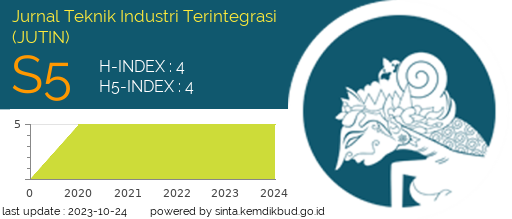Integrasi Metode E-Servqual dan Metode Fuzzy pada Pengukuran Kualitas Pelayananan aplikasi Jamsostek Mobile
DOI:
https://doi.org/10.31004/jutin.v7i1.18640Keywords:
BPJS Ketenagakerjaan, Jamsostek Mobile, E-servqual, FuzzyAbstract
The business world continues to improvise and innovate in order to retain customers as the market becomes increasingly dynamic due to advances in information technology and telecommunications. Effective and efficient shopping, purchasing and distribution using a site design called E-Service Quality. This study seeks to ascertain what quality standards need to be improved and assess the level of service provided by Jamsostek Mobile (JMO) by utilizing E-Servqual (Service Quality) and a fuzzy approach, 20 criteria and 6 dimensions, namely efficiency, compliance, system availability, privacy, responsiveness, contacts for analysis. The findings of this study reveal that Jamsostek Mobile (JMO) customer service is of good quality. Jamsostek Mobile (JMO) performance often meets consumer expectations. Only one dimension, namely System Availability, has a negative value. 18 criteria have positive gap values ??while the other 2 have negative gap values ??based on the expected and expected defuzzification values ??of the 20 criteria. Jamsostek Mobile (JMO) users consider several characteristics to be so significant that they are assessed as top priorities using a Cartesian diagram. Even so, the Jamsostek Mobile (JMO) service is still below standard in terms of System Availability, with the requirements being that the Jamsostek Mobile (JMO) application system must function perfectly and offer excellent customer support for information requests and complaintsReferences
Akter, S., D’Ambra, J., & Ray, P. (2010). Service Quality of Health Platforms: Development and Validation of a Hierarchical Modal Using PLS. Electronic Markets, 20(3–4), 209–227.
Alexa. (2021). Competitive Traffic Sources e-commerce. Diakses dari Alexa.Com.
Alomari, M., P, W., & Sandhu, K. (2012). Predictors for E-goverment Adoption in Jordan: Deployment of an Empirical Evaluation Based on a Citizen-centric Apporoach. Information Technology & People, 25(2), 207–234.
Anggraeni, N. M. S., & Yasa, N. N. K. (2012). E-service quality terhadap kepuasan dan loyalitas pelanggan dalam penggunaan internet banking. Jurnal Keuangan Dan Perbankan, 16(2), 293–306.
APJII. (2020). Profil Pengguna Internet Indonesia 2020. Diakses dari http://www.apjii.or.id/content/read/39/27/PROFIL-PENGGUNA-INTERNET-INDONESIA-2020
Arikunto. (2002). Metodologi Penelitian Suatu Pendekatan Proposal. In PT Rineka Cipta. Azwar, S. (2000). Reliabilitas dan Validitas. Pustaka Pelajar Offset.
Benaroch, M., & Appari, A. (2011). Pricing E-service Quality Risk in Financial Service. Electronic Commerce Research and Applications, 10(5), 534–544.
Carlson, J., & O’Cass, A. (2011). Devoloping of Framework for Understanding E-service Quality, its and Antecedents, Consequences, and Mediators. Managing Service Quality, 21(3), 264–286.
Chase, R. B., Jacobs, F. R., & Aquilano, N. J. (2006). Operations Management for Competitive Advantage (11th ed.). McGraw Hill.
Chen, M. H., Tsai, K. M., Hsu, Y. C., & Lee, K. Y. (2013). E-service Quality Impact on Online Customer’s Perceived Value and Loyalty. China-USA Business Review, 12(5), 473–485.
Cronin, L. (2015). Life Skills Development Through Youth Sport: Antecedents, Consequences, and Measurement.
Downloads
Published
How to Cite
Issue
Section
License
Copyright (c) 2024 Fitri Yanti, Winata Nugraha

This work is licensed under a Creative Commons Attribution-ShareAlike 4.0 International License.





